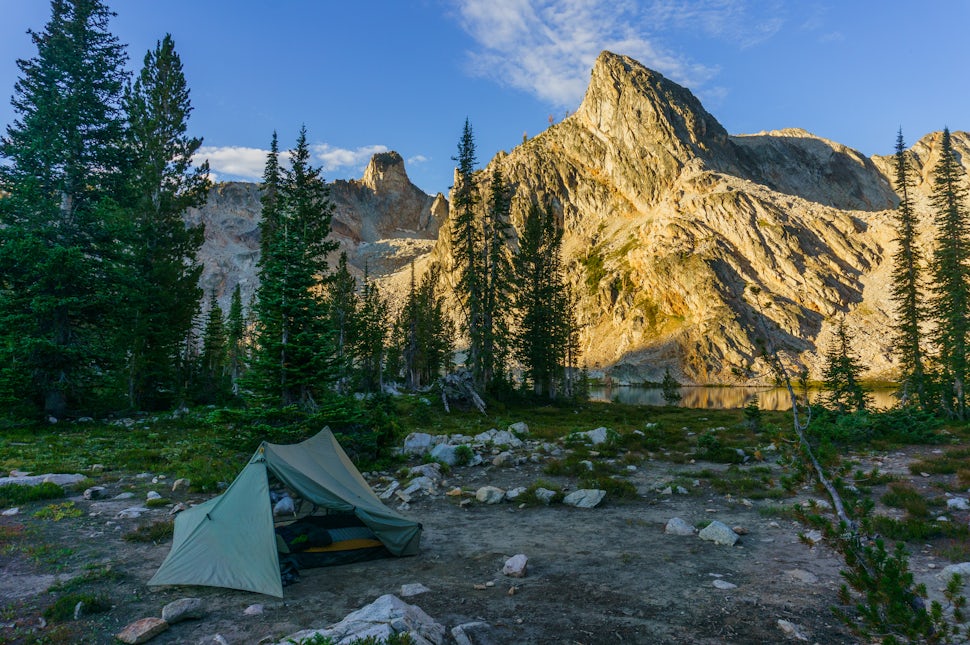Should You Buy a Synthetic or Down Sleeping Bag?
There might not be a more debated question In the world of outdoor gear.

A sleeping bag is a
big investment so you want to ensure that whatever you bag you buy matches your needs.
Ultimately, there is no right or wrong answer and the decision of
down vs. synthetic depends a lot on your specific use case. With that
said, here are some strengths of each option to keep in mind:
Pros of Down
-
Warmth to Weight Ratio: Due to its branched structure and fine filaments, down insulates better per weight than any synthetic fiber humans have been able to produce so far. For the ultralight crowd looking to shed ounces from their pack, this feature is a strong draw.
-
Compressibility: Down is extraordinarily compressible and can do so without damaging the fibers. Based on the volume of your backpack and/or duration of your trips, this could be a major consideration.
-
Longevity: High quality down retains its insulating properties and loft for many years if properly cared for (wash regularly with a down-safe soap and store uncompressed whenever possible). Although the upfront investment in down may be off-putting, you should keep in mind the cost per year of use over its lifetime.
Pros of Synthetic
-
Insulates When Wet: One of the most touted strengths of synthetics is their ability to insulate when wet. This holds true whether the moisture you’re concerned about is high humidity, rain splash back under your tent fly, condensation in a single wall tent, or even moisture produced by your body. Of course, if you thoroughly drench your synthetic bag in a river, it's not going to be very warm – we’re talking about moderate amounts of moisture here.
-
Quick Drying: When it comes to moisture, synthetics also dry faster since the linear structure of their fibers is less intricate than that of down feathers. In the chance your gear gets wet, this can help you get back on the trail faster.
-
Inexpensive: Because synthetic insulation can be produced in a factory without relying on animals, most sleeping bags will be substantially less expensive than their down counterparts. Depending on your budget, this can be an important factor.
-
Baffle-less: An advantage of synthetics which is not commonly discussed is their avoidance of baffled constructions. Down tends to shift more than synthetic insulation and therefore baffles are needed to maintain loft distribution across the sleeping bag or garment. Every time a baffle is stitched into the fabric, it prevents down from occupying that area and thereby introduces cold spots. Since sleeping bags almost always utilize a box baffle construction, this loss is minimized, but many down jackets still have a sewn-through design where cold spots are more obvious.
-
Handles Body Oils: Unlike down, synthetic insulation is not as prone to degrading from long-term exposure to body oils. If most of your trips occur in the summer when you may sweat a lot at night without wearing base layers, a synthetic bag might require less frequent cleaning for optimal performance than a down one.
Why not Both?
Given how often the choice of down or synthetic is polarized, I was surprised to learn that in sub-freezing winter conditions, the best option is often a combination of the two. Although winter camping is usually low humidity, the cold temperatures mean that the dew point (where water condenses) occurs somewhere within your sleeping bag’s insulation layer. With a down bag, all the moisture your body generates throughout the night can condense in the fibers, leaving you with a damp bag in the morning. The solution – layer a lightweight synthetic (40-50 degree F) bag over a shoulder season down bag (10-20 degree F). Using the down for the majority of your warmth keeps weight down, while the thin synthetic bag allows moisture to escape the down layer before condensing. For those curious about this setup, Enlightened Equipment has an excellent article that goes into more detail.
We want to acknowledge and thank the past, present, and future generations of all Native Nations and Indigenous Peoples whose ancestral lands we travel, explore, and play on. Always practice Leave No Trace ethics on your adventures and follow local regulations. Please explore responsibly!
Do you love the outdoors?
Yep, us too. That's why we send you the best local adventures, stories, and expert advice, right to your inbox.








